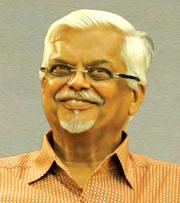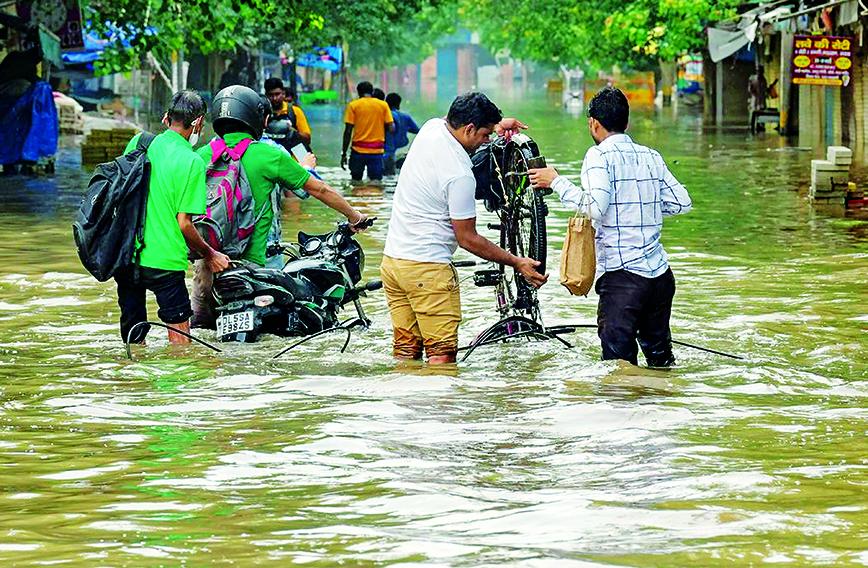
SANJAYA BARU
During the year I was at the Lee Kuan Yew School of Public Policy in Singapore the then Lt Governor of Delhi, Tejinder Khanna, paid a visit to the country and dropped in at the school for a chat with the faculty. Noting the fact that Singapore was a city state and India was a subcontinental nation, Khanna turned to me and asked, “What is it that we can learn from Singapore?”
He may have expected a long lecture on stuff like law and order, governance, investment in education, and so on and so forth. I had reflected on this question many times during my stay in Singapore. It was a favourite question of Indian policymakers, public policy professionals and commentators in the media. So I was ready with an answer. It was brief and delivered in an instant. “Drainage,” I said.
The Lt Governor smiled. Perhaps he thought I was mocking him or making light of his ponderous question. I was dead serious. There is much that one can learn from Singapore’s example. In fact, in the year I was there, one of the students in the public policy programme was an officer of the Indian Police Service who was totally focused on studying how Singapore would respond to an amphibious terror attack like the one staged from the sea by Pakistani terrorists on Mumbai. There are other lessons too one can learn from Singapore.
However, having travelled to that country in the monsoon month of August 2008, what impressed me most on arrival was the very effective drainage system that had been built with an important strategic consideration in mind. Singapore is an island with very little domestic supply of potable water. It is dependent on neighbouring Malaysia for importing some of its requirements. In order to enhance national self-sufficiency in the availability of drinking water the Singapore government created an island-wide network of rainwater harvesting systems with a drainage plan that ensured that as little as possible of rainwater would be lost to the ocean around and as much as possible would be collected and used.
Having lived in Hyderabad and then in New Delhi, I was all too familiar with the problem of urban flooding and waterlogging. Every year, the standard explanation trotted out would be that the drainage system was meant for a certain average annual rainfall and that during the monsoon weeks on a few days there would be excess rainfall and so it was an occasional problem. What this reply ignores is the entire history of public works in the subcontinent over millennia. Man-made water bodies were created precisely to store this excess rainfall so that adequate groundwater would be available in dry months.
To the best of my knowledge, the only city that tried to focus on rainwater harvesting and insisted on adequate provision being made in all new buildings and localities is Chennai. Former Chief Minister J. Jayalalithaa was credited with taking personal interest in this. Perhaps Chennai was close enough to Singapore to be positively influenced by its experience. Urban rainwater harvesting is the only solution to the problem of excess rainfall. This requires proper and efficient drainage systems.
Building better drainage systems requires investment and that too by municipalities. A recent study of the financial health of Indian municipalities notes that few of them are financially self-reliant, and require state and central government funds even to carry out their regular activities. Prepared by a research team at Munify Municipal Database (Munify.in) and published by the National Institute of Urban Affairs, the report, Assessing the Financial Health of Indian Cities, says, “Our analysis of twenty-five municipal corporations shows that on an average, own revenues constituted only 48% of the total revenues, indicating that local governments in India are not fiscally self-reliant.”
Improving municipal finances is an important and necessary step. However, improving the quality and accountability of urban governance is equally important. When the Jawaharlal Nehru National Urban Renewal Mission was launched, the facility of providing financial support to state governments and municipal bodies was linked to governance reform. While the funds were happily dispensed and absorbed, few states have bothered to keep their side of the bargain with better municipal governance.
No city symbolizes this neglect better than Delhi which has an elected government of its own. Indeed, the July 2023 downpour also exposed very embarrassingly the shoddy preparation for the grand staging of the Group of Twenty (G20) summit. The Narendra Modi government has been advertising across the country and the world its hosting of the G20 summit. Yet, not only is the summit venue still not ready, the parts that are ready have been flooded!
Apart from exposing inefficiency, the sorry state of Delhi’s well-funded urban infrastructure also stands testimony to corruption. When newly built roads have potholes, don’t blame the monsoon. Blame the contractor who built it and the politicians and officials who took their cuts, turning a blind eye to shoddy work.
New Delhi is India’s most pampered city and the state government has no shortage of funds. The Arvind Kejriwal government has spent vast sums on building a fancy home for the chief minister, on promoting his personality through state-funded advertisements and so on. Yet, urban infrastructure construction and maintenance are below par. Despite Modi and Kejriwal being residents of the national capital, the metropolis is nowhere near being a shining example of urban governance. ν
Sanjaya Baru is a writer and Distinguished Fellow at the United Service Institution of India
Comments
Currently there are no Comments. Be first to write a comment!




